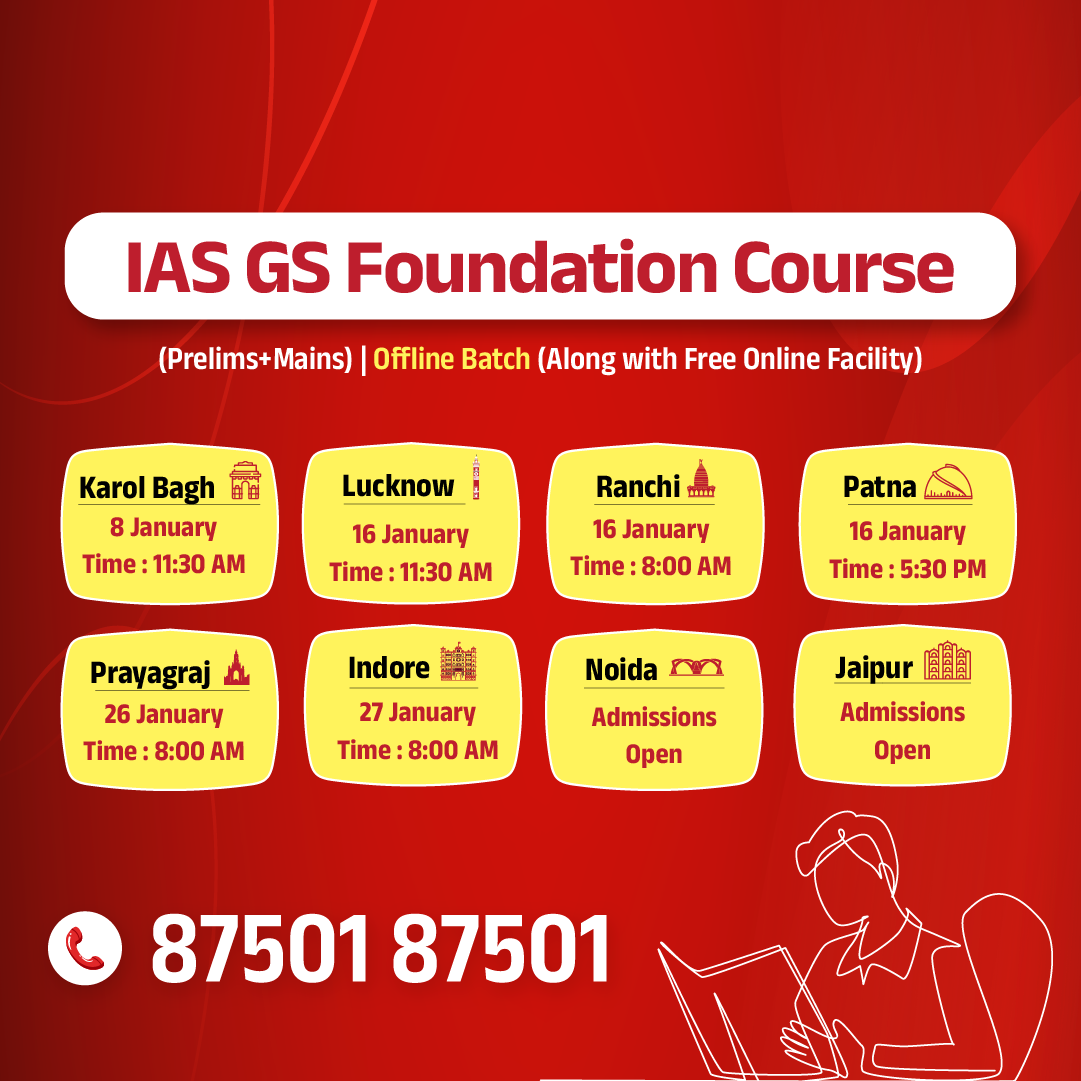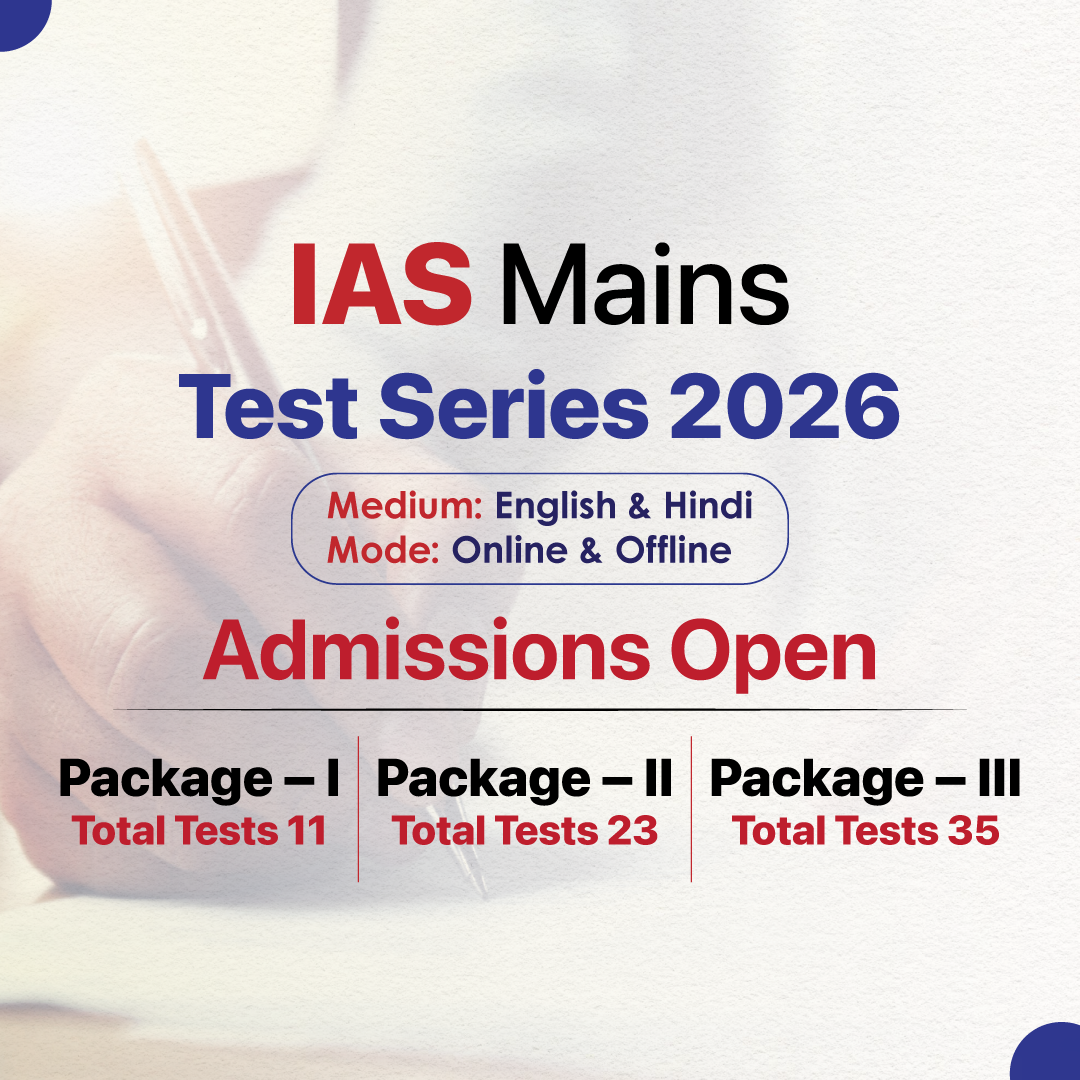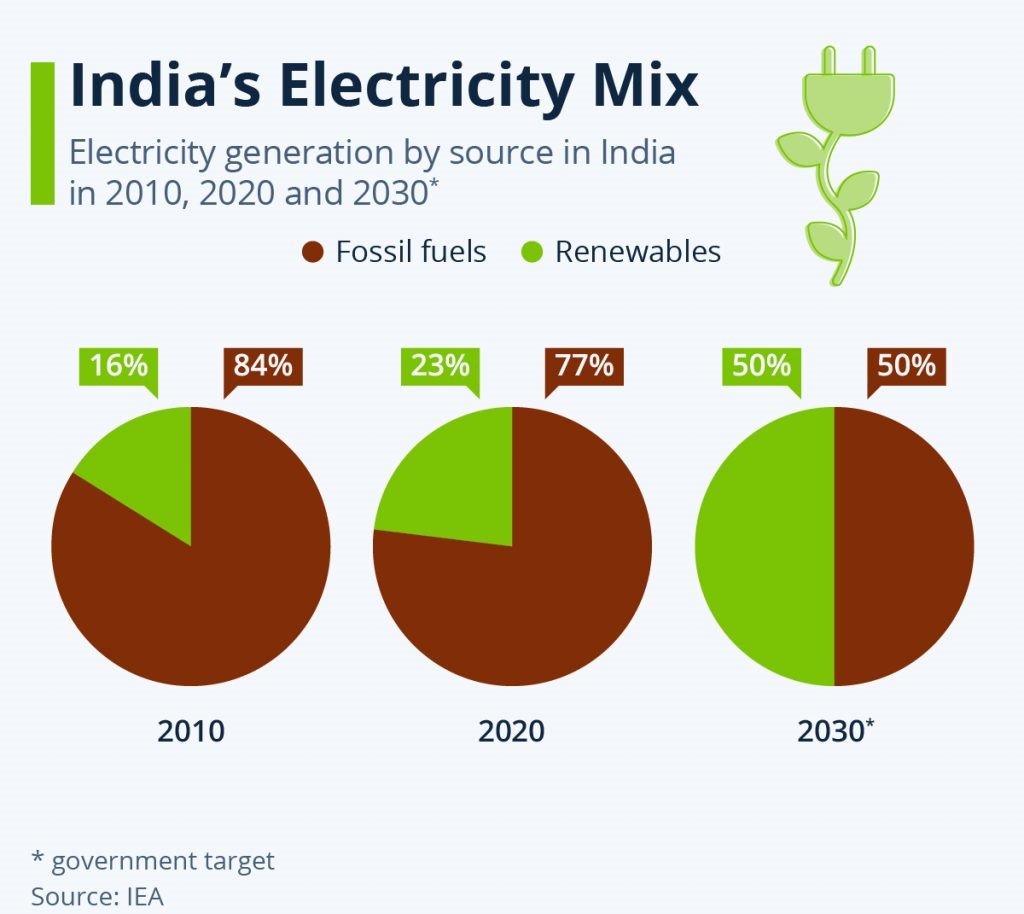Rajasthan Switch to Hindi
Rajasthan Leads India's Transition to Green Energy
Why in News?
In recent times, Rajasthan has led India's transition to green energy with over 26,800 MW of installed renewable energy capacity.
Key Points
- Rajasthan produced 39,300 million units of green energy in the first 10 months of 2023-24: a three-fold rise compared to the same period in 2019-20.
- In Rajasthan, renewable energy sources account for 64.5% of its power generation capacity, significantly surpassing Gujarat's 47% renewable energy mix in its energy portfolio.
- Rajasthan has already overtaken Tamil Nadu as the number one state in generating wind power.
Five Panchamrit Targets
- At UNFCCC COP 26, Prime Minister unveiled five Panchamrit targets, which include:
- Achieving a non-fossil energy capacity of 500 GW by 2030.
- Sourcing 50% of India's energy from renewable sources by 2030.
- Decreasing total projected carbon emissions by one billion tonnes by 2030.
- Lowering the carbon intensity of India's economy by less than 45% by 2030.
- Attaining Net Zero emissions by 2070.
Haryana Switch to Hindi
Haryana Declares Winners for 24,484 Solar Water Pumps under PM-KUSUM
Why in News?
Recently, Haryana Renewable Energy Development Agency (HAREDA) has granted contracts for the provision, installation, and commissioning of 24,484 solar water pumping systems as part of Component B of the Pradhan Mantri Kisan Urja Suraksha evam Utthaan Mahabhiyan Yojana (PM-KUSUM).
Key Points
- Component B of PM-KUSUM centers on the instalation of two million independent solar water pumps, intended for agricultural irrigation purposes.
- The project targets a range of beneficiaries, such as individual farmers, water user associations, cattle shelters, farmer-producer organizations, primary agricultural credit societies, and community-based irrigation systems.
What is PM-KUSUM?
- About:
- The PM-KUSUM is a flagship scheme initiated by the Indian government in 2019 with the primary objective of transforming the agricultural sector by promoting the adoption of solar energy solutions.
- It operates on a demand-driven approach. Capacities are allocated based on the demands received from various states and union territories (UTs).
- Through various components and financial support, PM-KUSUM envisions achieving a significant solar power capacity addition of 30.8 GW by 31st March, 2026.
- Objectives of PM-KUSUM:
- De-dieselisation of the Farm Sector: The scheme aims to reduce the dependence on diesel for irrigation by encouraging the use of solar-powered pumps and other renewable energy sources. It also seeks to increase farmers' income by reducing irrigation costs through the use of solar pumps and enabling them to sell surplus solar power to the grid.
- Water and Energy Security for Farmers: By providing access to solar pumps and promoting solar-based community irrigation projects, the scheme aims to enhance water and energy security for farmers.
- Curbing Environmental Pollution: Through the adoption of clean and renewable solar energy, the scheme aims to mitigate environmental pollution caused by conventional energy sources.
- Components:
- Component-A: Setting up of 10,000 MW of Decentralized Ground/Stilt Mounted Solar Power Plants on barren/fallow/pasture/marshy/ cultivable land of farmers.
- Component-B: Installation of 20 Lakh Stand-alone Solar Pumps in off-grid areas.
- Component-C: Solarisation of 15 Lakh Grid Connected Agriculture Pumps through: Individual Pump Solarisation and Feeder Level Solarisation.
Haryana Switch to Hindi
MGNREGS Wage Rates Revised for Different States
Why in News?
Recently, wages under the Mahatma Gandhi National Rural Employment Guarantee Scheme (MGNREGS) have been revised, with hikes ranging between 4 and 10% for different states.
Key Points
- Haryana has the highest wage rate for unskilled workers under the scheme at Rs 374 a day, while Arunachal Pradesh and Nagaland have the lowest at Rs 234.
- The increases have been made on the 2023 wage rates under the scheme that is aimed at enhancing the livelihood security of households in rural areas by providing at least 100 days of guaranteed wage employment in a financial year to every household whose adult members volunteer to do unskilled manual work.
Mahatma Gandhi National Rural Employment Guarantee Scheme (MGNREGS)
- About: It is one of the largest work guarantee programmes in the world.
- Launch:
- It was launched on 2nd February 2006
- The Mahatma Gandhi National Rural Employment Guarantee Act was passed on 23rd August 2005.
- Objective:
- The primary objective of the scheme is to guarantee 100 days of employment in every financial year to adult members of any rural household willing to do public work-related unskilled manual work.
- Legal Right to Work:
- Unlike earlier employment guarantee schemes, the act aims at addressing the causes of chronic poverty through a rights-based framework.
- At least one-third of beneficiaries have to be women.
- Wages must be paid according to the statutory minimum wages specified for agricultural labourers in the state under the Minimum Wages Act, 1948.
- Demand-Driven Scheme:
- The most important part of MGNREGA’s design is its legally-backed guarantee for any rural adult to get work within 15 days of demanding it, failing which an ‘unemployment allowance’ must be given.
- This demand-driven scheme enables the self-selection of workers.
- Decentralized Planning:
- There is an emphasis on strengthening the process of decentralisation by giving a significant role in Panchayati Raj Institutions (PRIs) in planning and implementing these works.
- The act mandates Gram sabhas to recommend the works that are to be undertaken and at least 50% of the works must be executed by them.
Bihar Switch to Hindi
The Central Government Cancels the Auction of 13 Crucial Mineral Blocks
Why in News?
Recently, the Centre has cancelled auction for 13 of 20 blocks on offer in the first round of critical mineral bids following poor response from the bidders.
Key Points
- These 13 crucial mineral blocks which received poor response hold glauconite, nickel, chromium and platinum group elements (PGE), potash, etc. They are spread across Bihar, Jharkhand, Odisha, Tamil Nadu, Uttar Pradesh, and Jammu and Kashmir (J&K).
- The PGEs—platinum, palladium, rhodium, ruthenium, iridium, and osmium—are metals that have similar physical and chemical properties and tend to occur together in nature.
- Earlier, in June 2023, the government released a list of 30 minerals considered critical for the country. These include antimony, beryllium, bismuth, cobalt, copper, gallium, germanium, graphite, hafnium, indium, lithium, molybdenum, niobium, nickel, platinum group elements (PGE), phosphorous, and potash.
- Rare Earth Elements (REE) like rhenium, silicon, strontium, tantalum, tellurium, tin, titanium, tungsten, vanadium, zirconium, selenium and cadmium were also present in this list.
Critical Minerals
- Critical minerals are those minerals that are essential for economic development and national security
- The lack of availability of these minerals or concentration of extraction or processing in a few geographical locations may lead to supply chain vulnerabilities and even disruption of supplies.
- Declaration of Critical Minerals:
- It is a dynamic process, and it can evolve over time as new technologies, market dynamics, and geopolitical considerations emerge.
- Different countries may have their own unique lists of critical minerals based on their specific circumstances and priorities.
- Expert Committe under Ministry of Mines has identified a set of 30 critical minerals for India.
Madhya Pradesh Switch to Hindi
Cooperative Societies Under Ambit of RTI for First Time in Madhya Pradesh
Why in News?
In a recent landmark order, all cooperative societies in Madhya Pradesh, involved in grain procurement and the operation of ration shops have been bought under the ambit of Right to Information Act (RTI), 2005 with immediate effect.
Key Points
- State Information Commissioner (SIC) has also mandated the proactive disclosure of ration shop salesperson’s salaries on the district portal to ensure transparency and accountability.
- It is aimed at ensuring justice for farmers and common citizens by subjecting cooperative societies to RTI Act.
Cooperative Societies
- About:
- Cooperatives are organizations formed at the grassroots level by people to harness the power of collective bargaining in the marketplace.
- This can mean different kinds of arrangements, such as using a common resource or sharing capital, to derive a common gain that would otherwise be difficult for an individual producer to get.
- In agriculture, cooperative dairies, sugar mills, spinning mills etc. are formed with the pooled resources of farmers who wish to process their produce.
- Cooperatives are organizations formed at the grassroots level by people to harness the power of collective bargaining in the marketplace.
- Jurisdiction:
- Cooperatives are a state subject under the Constitution, meaning they come under the state governments’ jurisdiction, but there are many societies whose members and areas of operation are spread across more than one state.
- Cooperatives of more than one state are registered under the Multi-State Co-operative Societies Act (MSCS) of 2002.
- Their board of directors has representation from all states they operate in.
- Administrative and financial control of these societies is with the central registrar, with the law making it clear that no state government official can wield any control over them.
State Information Commission (SIC)
- It is constituted by the State Government.
- It has one State Chief Information Commissioner (SCIC) and not more than 10 SICs to be appointed by the Governor on the recommendation of the Appointments Committee headed by the Chief Minister.


.png)




.jpg)























.png)


.jpg)

 PCS Parikshan
PCS Parikshan



